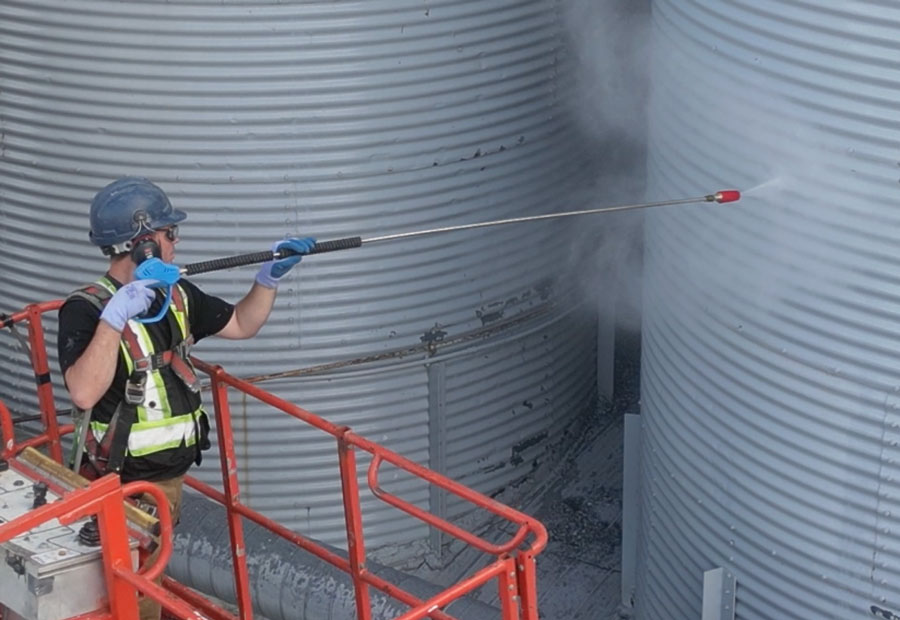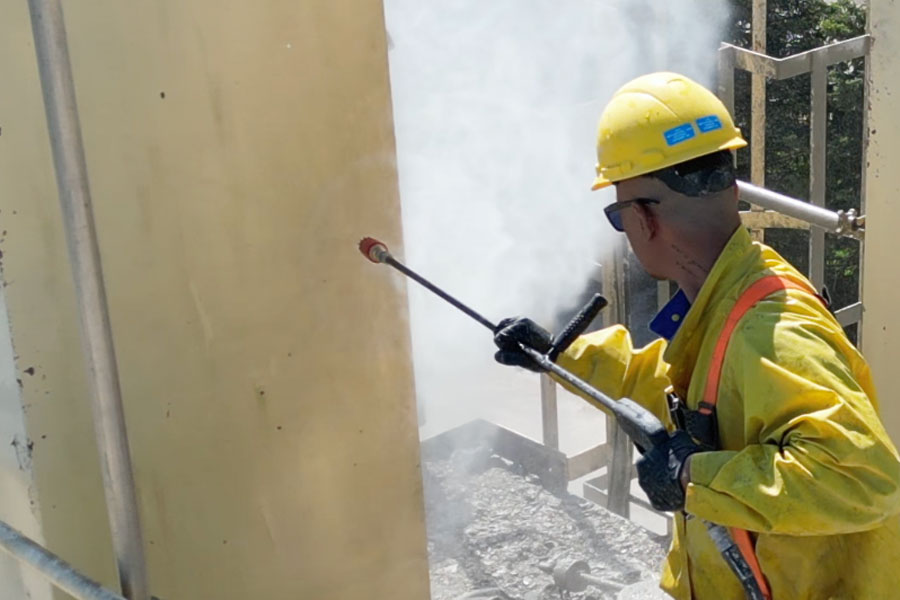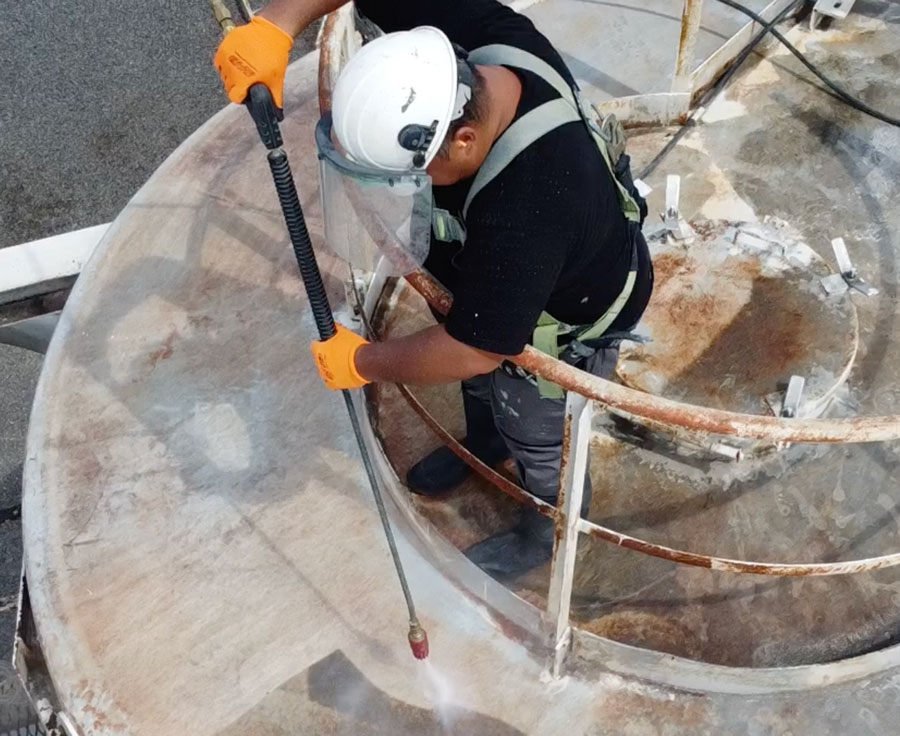Water Jet Blasting
Industrial Water Jet Cleaning
is a powerful and effective method of cleaning various surfaces and removing contaminants using high-pressure water jets. It is widely used in industries such as manufacturing, construction, and maintenance for cleaning, surface preparation, and maintenance tasks. Here’s an explanation of how industrial water jet cleaning works:
1. High-Pressure Water Source: The process begins with a high-pressure water source, which is typically a specialized pump that can generate extremely high-pressure water.
These pumps can produce pressures ranging from 5,000 to 40,000 pounds per square inch (psi) or even higher, depending on the specific application.
2. Water Delivery System: The pressurized water is then delivered through a system of hoses and nozzles to the location where cleaning or cutting is required. The water may be heated to improve its effectiveness in certain applications, such as removing grease and grime.


3. Nozzles: Different types of nozzles are used depending on the specific cleaning or cutting task. The nozzle choice can impact the water stream’s pressure and pattern.
Common nozzle types include straight jets for high-pressure cleaning, fan nozzles for wider coverage, and rotating nozzles for more aggressive cleaning.
4. Surface Preparation: Industrial water jet cleaning can be used for various tasks, including removing paint, rust, scale, coatings, and adhesives from surfaces. It’s particularly effective for preparing surfaces for painting, welding, or other treatments because it leaves a clean, profiled surface that promotes better adhesion.
5. Cleaning Contaminants: The high-pressure water jet can dislodge and remove contaminants such as dirt, grease, oil, debris, and even biological materials like algae or barnacles from surfaces.
In some cases, it can be used for sanitation purposes, as the high-pressure water can help eliminate bacteria and other pathogens.
6. Safety Considerations: Safety is a critical aspect of industrial water jet cleaning. Operators should wear appropriate protective gear, and safety procedures must be strictly followed, as the high-pressure water jet can be dangerous if not handled correctly.
This includes the risk of injury from the high-pressure stream and potential flying debris.


8. Environmental Considerations: Water jet cleaning is generally more environmentally friendly than using harsh chemicals or abrasive materials for cleaning because it doesn’t produce harmful pollutants or waste.
However, it’s essential to manage the water runoff and disposal properly, especially when cleaning substances that may be considered hazardous.
Industrial water jet cleaning is versatile and can be adapted to various industries and applications, making it an efficient and environmentally friendly option for a wide range of cleaning and surface preparation needs.
It provides a balance between the high cleaning power and reduced environmental impact, making it a preferred choice for many industrial cleaning tasks.
